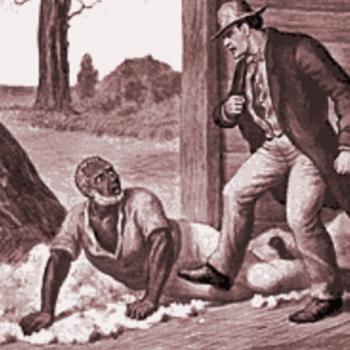Previous in Series: Race and Hatred
In his book The Logic of Life, Tim Harford describes a recent sociological experiment which, he claims, has profound implications for the way we think about race and racism. Participants in the study (a group of students from the University of Virginia) were divided into two groups: employers, and potential employees. Employees were then further subdivided (randomly) into “greens” and “purples.” The experiment contained 20 distinct rounds of play, and the student employees were rewarded with a small cash bonus for each round in which they were able to secure employment. In each round, the employees first had to choose whether or not to “get an education.” Opting for an education cost the students a small fee, but it also increased the chances that they would do well on a series of “tests” (actually random dice rolls, on which educated students “passed” with a 4, 5, or 6, while uneducated students passed only on a 6).
Once the employees had made their educational decisions and perform the test rolls, “resumes” for each of them would be sent to the employer students, on which were listed only two pieces of information about each employee: 1) whether they were a green or purple, and 2) whether they had passed their tests. The employer students then had to decide whether or not to hire the potential employees, and received cash bonuses in each round for the employees they hired who had gotten an education (all of this was done via computer, btw, in order to avoid collusion and/or side bargaining). After each round, the students were presented with the results indicating the average test scores and hiring rates for greens and for purples during that round. And then the whole process was repeated.
Harford describes the results of the experiment as follows:
In the first round, employers looked only at test results when deciding whether to hire. Their hiring decision was colorblind. How could it not have been? The game started with a blank slate. “Green” or “purple” conveys no information at all in the first round of the game.
But from the second round on, employers had a history to work with. As it happens, more green than purple workers had gambled on getting an education in the first round, and so the green test scores tended to be better. The colors had initially been assigned at random, so this was pure chance. This didn’t stop employers from figuring that greens appeared to be more disposed than purples to invest in an education. They became more willing to take a chance on green workers with a low test score and less willing to hire purple workers even with a high score.
With the Web interface also revealing the average hiring rates for greens and purples in the previous rounds, the workers quickly responded: Green workers kept investing in an education, and purple workers did not. Why bother to pay for an education if employers are less likely to hire you because you’re purple? And so a vicious circle took hold….
Although the initial disparity was purely a matter of chance, and although there was no fundamental difference between the greens and the purples, the students playing the role of employers were absolutely correct in their view that green workers were more likely to be educated…. The employers’ view became self-fulfilling as purple workers rationally abandoned hope of getting hired and stopped paying for education. And once the downward spiral set in, a determinedly color-blind employer would actually have lost money compared with one who took note of the color of the applicants.
Now I have a number of things to say about this experiment and its implications, which I will get to next time. But for now, I would like to propose the following question for discussion: were the students involved in this experiment racist? That is, in choosing to take into consideration whether a given applicant was “green” or “purple,” were they doing something racist?
Next in Series: “Rational” Racism












